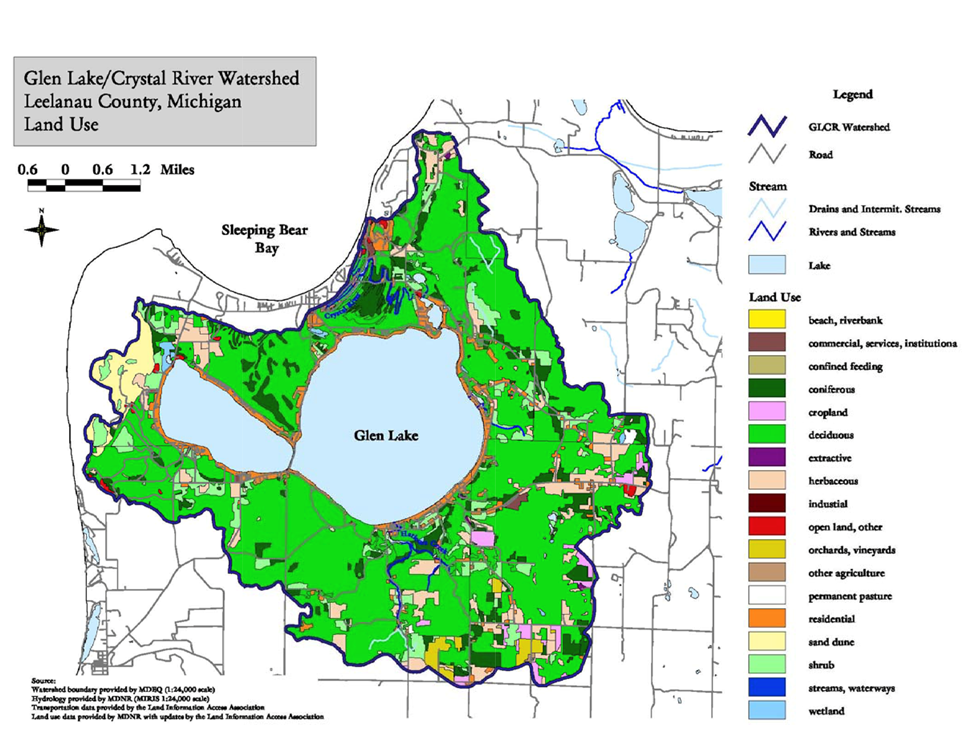
Consider the size of the Glen Lake/Crystal River Watershed. It covers approximately 30,000 acres. Subtract the 6,400 acres that is considered surface water and you’re left with 23,600 acres of land. That’s an exceptional 4 to 1 ratio of land to water!
The overwhelming majority of that land–16,500 acres, thanks in large part to the Sleeping Bear Dunes National Lakeshore–is comprised of stands of northern hardwoods. Those forests serve vital environmental and ecological roles in our watershed. Also beneficial, but a distant second, are the open shrub and grasslands that cover 3,600 acres of land in our watershed.
Coming in third place, at 1,400 acres, is the only major human land use–residential homes. But keep in mind, residential activities tend to be clustered along our shores where they can have a significant impact on water quality. Due to the severe limitations imposed by soil and/or topography, we have very few sites suitable for crops like the cherries and grapes popular elsewhere in the region. Therefore, agriculture activities in our watershed are so low in acreage as to be considered insignificant. We also lack the major manufacturing and industries that are problematic in other watersheds. Our only significant industry is seasonal tourism, the impact of which is most highly concentrated during about 10 weeks of the year.
In summary, the “cover story” for our watershed is that the high percentage of forested land use protects scenic beauty while simultaneously providing wildlife habitat, groundwater recharge, and facilitating high water quality. Our watershed is uniquely and naturally positioned to be among the very best watersheds in the world! Let’s not take it for granted. We must put forward every effort to preserve and protect it.
One way you can help protect our surface and groundwater is to minimize or reduce your impervious surfaces whenever and wherever you can on your property. Increase the amount of surface on your property that is covered by natural vegetation and pervious surfaces. By doing this, you will facilitate infiltration of rain water and snow melt and eliminate runoff that causes erosion and sedimentation.
Want to learn more about impacts of land use? Try the Runoff Simulation.
Recent Comments